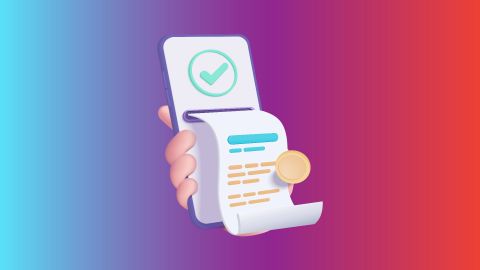Learn about the different methods for electricity demand forecasting, including machine learning, and understand how accurate forecasts benefit both energy providers and consumers.
Electricity Demand Forecasting
-
-
Electricity demand forecasting is the process of predicting future energy consumption over specific time periods. This practice helps utilities, grid operators, and policymakers ensure a reliable power supply. It factors in historical data, seasonal variations, economic growth, and demographic trends. By understanding expected electricity demand, stakeholders can optimise resource allocation and maintain system efficiency.
For quick and easy electricity bill payment, customers can explore reliable online options such as Bajaj Pay, the BBPS platform on Bajaj Finserv.Importance of forecasting in the energy sector
Accurate electricity demand forecasting is vital for several reasons:- Resource planning: It helps power plants optimise fuel usage, reducing operational costs and environmental impact.
- Grid stability: Forecasting ensures a balance between electricity supply and demand, minimising blackouts and system failures.
- Investment decisions: Long-term forecasts guide infrastructure investments, such as new power plants or renewable energy projects.
- Policy formulation: Governments use demand data to develop energy policies and sustainability initiatives.By aligning supply with demand, forecasting promotes efficient and sustainable energy use.
Key methods for electricity demand forecasting
- Time series analysis: This method uses historical data to identify patterns and trends in electricity consumption.
- Regression analysis: Regression models assess the relationship between demand and influencing factors like weather or population growth.
- Neural networks: These advanced models simulate complex relationships between multiple variables, improving forecast accuracy.
- End-use models: These focus on electricity use at the appliance level, providing granular insights.
- Hybrid approaches: Combining statistical and AI-based methods offers better accuracy and adaptability.
Machine learning in demand forecasting
Machine learning (ML) has revolutionised electricity demand forecasting by improving prediction accuracy. ML models analyse vast datasets and adapt to changing patterns in consumption.
Key ML techniques: Algorithms like decision trees, support vector machines, and deep learning enhance forecast precision.
Real-time forecasting: ML enables real-time analysis, allowing energy providers to respond promptly to sudden demand fluctuations.
Handling complexity: Machine learning excels at managing nonlinear relationships and interactions between variables.
Integration with IoT: ML models can incorporate data from smart meters and sensors, enriching forecasts with real-world insights.
Machine learning ensures forecasts remain reliable in an increasingly dynamic energy landscape.Challenges in electricity demand forecasting
Forecasting electricity demand comes with significant challenges:- Data quality: Incomplete or inaccurate data can distort predictions.
- Weather variability: Sudden weather changes impact energy consumption patterns unpredictably.
- Economic factors: Recessions or booms influence electricity use but are difficult to predict.
- Technological disruptions: The adoption of renewable energy and electric vehicles alters traditional demand patterns.
Applications of electricity demand forecasting
- Grid management: Accurate forecasts ensure stable grid operation by aligning supply with demand.
- Renewable integration: Forecasting helps manage the intermittent nature of renewable energy sources like solar and wind.
- Energy trading: Predicting demand aids in pricing and purchasing decisions in energy markets.
- Peak demand reduction: Utilities use forecasts to implement demand response programmes, reducing strain during peak hours.Demand forecasting plays a crucial role in shaping a reliable and sustainable energy ecosystem.
Future trends in demand forecasting
Future advancements in demand forecasting focus on integrating technology and sustainability:- AI and big data: Enhanced algorithms and massive datasets will drive precision.
- Decentralised energy systems: Forecasting will adapt to energy-sharing models and microgrids.
- Climate considerations: Models will increasingly account for climate change’s long-term effects on consumption.These trends highlight the evolving role of forecasting in a dynamic energy sector.
Benefits of accurate demand forecasting
- Optimised resource use
- Improved grid reliability
- Reduced operational costs
- Informed investment decisions
Key technologies used in demand forecasting
Technology Application Machine learning Analyses complex, nonlinear patterns IoT Provides real-time consumption data Cloud computing Offers scalable forecasting capabilities
-
Recharge and Pay Bills
Mobile Prepaid
Mobile Postpaid
Broadband Bill Payment
Electricity Bill Payment
Bajaj Finserv App for All Your Financial Needs and Goals
Trusted by 50 million+ customers in India, Bajaj Finserv App is a one-stop solution for all your financial needs and goals.
You can use the Bajaj Finserv App to:
You can use the Bajaj Finserv App to:
- Apply for loans online, such as Instant Personal Loan, Home Loan, Business Loan, Gold Loan, and more.
- Explore and apply for co-branded credit cards online.
- Invest in fixed deposits and mutual funds on the app.
- Choose from multiple insurance for your health, motor and even pocket insurance, from various insurance providers.
- Pay and manage your bills and recharges using the BBPS platform. Use Bajaj Pay and Bajaj Wallet for quick and simple money transfers and transactions.
- Apply for Insta EMI Card and get a pre-approved limit on the app. Explore over 1 million products on the app that can be purchased from a partner store on Easy EMIs.
- Shop from over 100+ brand partners that offer a diverse range of products and services.
- Use specialised tools like EMI calculators, SIP Calculators
- Check your credit score, download loan statements and even get quick customer support—all on the app.
Frequently asked questions
1. What is electricity demand forecasting?
It is predicting future electricity consumption based on historical and real-time data.
2. Why is demand forecasting important in the energy sector?
It ensures efficient resource planning, grid stability, and informed policymaking.
3. What are common methods of demand forecasting?
Methods include time series analysis, regression, neural networks, and hybrid approaches.
4. How does machine learning improve demand forecasting?
ML enhances accuracy by analysing complex datasets and adapting to changing consumption patterns.
5. What are the key challenges in demand forecasting?
Challenges include data quality issues, weather variability, and technological disruptions.
Show More
Show Less




